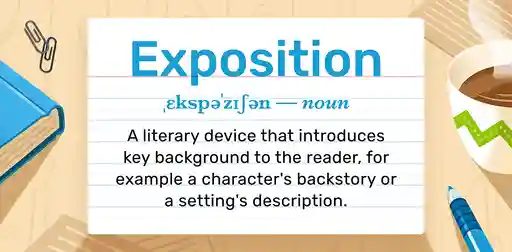Last updated on Jul 09, 2025
What is an Oxford Comma and When Should You Use it? [+Examples]
About the author
Reedsy's editorial team is a diverse group of industry experts devoted to helping authors write and publish beautiful books.
More about the Reedsy Editorial Team →Linnea Gradin
The editor-in-chief of the Reedsy Freelancer blog, Linnea is a writer and marketer with a degree from the University of Cambridge. Her focus is to provide aspiring editors and book designers with the resources to further their careers.
View profile →The Oxford Comma — sometimes also known as the serial comma, the Harvard comma, or the Chicago comma — is an optional comma placed immediately before the conjunction (usually "and" or "or") in a list (or “series”) of three or more items. For example, “She bought a pen, some paper, and scissors.” This punctuation is commonly used for stylistic reasons or to prevent ambiguity in a sentence.
In most cases, like the example above, putting an Oxford comma before the last “and” makes little difference to the overall meaning, but in other situations, it can help writers avoid misunderstandings.
In this article, we’ll take a closer look at everything you need to know about the Oxford comma, including why people are so divided on whether you should or shouldn’t use it — and how it became the focus of a $5 million dollar lawsuit! Let’s dive in.
The Oxford comma separates (and clarifies) list items
The Oxford comma gets its name from a style guide published by Oxford University Press in 1905. In this manual, it was suggested that the comma should be used to separate list items, thereby adding an extra layer of clarity to the text. This can be a simple list of nouns or more complex clauses stacked after one another.
Adding an Oxford comma can help not only with intonation (how you might read the words aloud) but — more importantly — can better communicate the intended meaning to the reader. Compare, for example:
I applied to America’s top colleges, Cambridge and Oxford.
I applied to America’s top colleges, Cambridge, and Oxford.

In this example, is the author saying that they think Cambridge and Oxford are top colleges located in America or are they saying they applied to top colleges in America, in addition to the two famous British universities, Cambridge and Oxford? Sometimes context and common sense will give us the answer to those questions, but with the Oxford comma, there’s never any doubt, making both the author’s admission status and academic future more secure.
Here’s another example of this put into action:
I’m inspired by my parents, Stephen King, and Anne Rice.
I’m inspired by my parents, Stephen King and Anne Rice.
In the first version of this sentence, with the Oxford comma, the author is clearly crediting four different people as their source of inspiration: their parents and two well-known horror and fantasy authors, Stephen King and Anne Rice. In the second example, the reader might mistakenly believe that this author is a first-rate, literary nepotism baby!
So, now that we have a better idea of what the Oxford comma is and does, let’s look at why it continues to cause such debate amongst grammarians and defenders of the English language.
It divides grammarians
The point of any punctuation mark is to make written words evoke spoken language. It’s there to guide readers on how a text is meant to sound, with the right flow, intonation, and pauses. Authors usually have a good idea of how their text is meant to be read, but it may not be immediately obvious to readers — unless they’re given some clues. When punctuation is misplaced or absent, it can make a text more difficult to read, putting pauses in weird places, emphasizing the wrong words, or combining parts of a sentence that are not meant to be combined.
Punctuation can provide this clarity, but there are also situations where it’s not strictly necessary. This is partly the reason why some people are sworn enemies of the Oxford comma, while others laud it as the best thing to happen to words since the Gutenberg press. The truth, as always, lies somewhere in the middle.
The case for the Oxford comma
There are generally three arguments for using the Oxford comma:
1. It is considered the norm in that particular variety of English.
Ironically, while the Oxford comma is named after Oxford University Press (OUP), the University of Oxford itself actually advises its students and staff against widespread usage, unless it’s necessary to avoid confusion or misunderstandings. The same is true for most British, Canadian, and Australian English style guides, whereas most American English style guides are in favor of the Oxford comma. We’ll take a closer look at the stances of different style guides later.
2. It’s consistent with all other punctuation rules for list items.
The semicolon, for example, is always applied before the last item on a list:
She loved going to the sea for three reasons: the sound of the waves relaxed her; the smell of the salt and seaweed made her feel at home; and the sight of the shoreline inspired her.
If we use a semicolon before the last clause in this type of list, defenders of the Oxford comma argue that the same should apply for other punctuation marks when listing things so that there’s a logical pattern to the grammar.
3. It removes ambiguity.
Perhaps the biggest reason people argue that we should use the Oxford comma, however, is that it provides clarity and removes ambiguity from sentences like these:
They drove to Hollywood with Vera, an agent and a stylist.
They drove to Hollywood with Vera, an agent, and a stylist.
Here, in the first sample sentence, there are two possible interpretations: Vera wears many hats, working as both an agent and a stylist, or ‘they’ went to Hollywood with Vera and two other people who were, respectively, an agent and a stylist. In the second sentence, the only possible interpretation is that ‘they’ were accompanied by three different people: Vera, the agent, and the stylist.
The difference is the question of whether the two last nouns, “an agent” and “a stylist,” describe “Vera” or whether they’re simply two additional items in a list. An Oxford comma generally suggests the answer.
Grammar nerd alert 🤓 If you really want to get technical about it, if “an agent” and “a stylist” were used to describe “Vera” in this sentence, this would be known as an ‘apposition’ — a grammatical construct where two (or more) elements, usually noun phrases, are placed next to each other so that one element identifies or describes the other.
The case against the Oxford comma
Funnily enough, the arguments against using the Oxford comma are very similar to the arguments for using it. People argue that:
1. It goes against the norm in that particular variety of English.
Since the Oxford comma is not considered the norm in British, Canadian, and Australian English, many style guides in these regions advise against its widespread use, limiting it to when it is strictly necessary.
2. It takes up unnecessary space and looks messy.
One of the biggest reasons people oppose the Oxford comma is not actually because of the grammar, but because they simply don’t like it. They think it complicates the text unnecessarily, looks ugly, and adds extra characters to the printed page. If you’re tight on space, are working towards a strict character limit, or want to reduce your page count, this last point may be especially important to consider.
In this sentence, for instance, adding an Oxford comma doesn’t actually make much of a difference and just makes it look more busy:
France’s flag is blue, white, and red.
France’s flag is blue, white and red.

No matter how you look at these two sentences, we get a clear idea of what the French flag looks like. There’s no huge risk of confusion and nothing is up for interpretation.
While this is largely a question of aesthetics and style for many, you could also argue that too many commas on the page not only looks messy, but may confuse the reader on what the text is supposed to sound like, distracting them from actually taking in the information properly. The grammar is getting in the way. And grammar should support communication, not make it more difficult.
3. It may create ambiguity.
Even though written language has evolved over thousands of years, misunderstandings remain part and parcel of human communication. It’s a common misconception that the Oxford comma always clarifies meaning, but in actual fact, it’s not a syntactical miracle cure. In rare cases, it can even open a sentence up to more interpretations, rather than clarify the meaning. Here’s an example:
This is my mother, Vera and Bree.
This is my mother, Vera, and Bree.
In the first sentence, a person is introducing three people: their mother, someone named Vera, and someone named Bree, to an unknown listener. In the second sentence, where the Oxford comma has been added, the same could be true, but it may also mean that the person is only introducing two people to the listener: the mother, whose name is Vera, and someone named Bree.
It's (mostly) a stylistic choice
So, with all that said, it seems the only conclusion we have reached is that grammatically speaking, the Oxford comma is neither correct nor incorrect. It is simply optional. While there are plenty of reasons for and against its usage, it will almost always come down to personal preference and context.
So if there’s no unanimous agreement about whether you should use this divisive punctuation mark, how do you know what to do next time you’re writing or editing a text of your own?
A safe option is to listen to what the style guides say.
Popular style guides have different takes on the Oxford comma
If in doubt about whether you should use the Oxford comma or not, you can start by looking at what the standard practice is in the regional variety of English you’re using. There are also different norms in different writing circles. The Oxford comma is generally favored in academic writing, but not in journalism.
The issue is, you will often have people on both sides of the fence, even within one region, so that only gets you so far. And since it’s not really a question about right or wrong, you can pretty much do as you like, as long as you’re consistent and stick to one style.
To help you choose one, here’s a non-exhaustive summary of different style guides and their stance on the Oxford comma:
| Style Guide | Region | Oxford comma? |
| The Chicago Manual of Style | USA | “Chicago strongly recommends this widely practiced usage." |
| The Publication Manual of the American Psychological Association (APA) | USA | "Use a comma before the conjunction that precedes the last term in a series." |
| The Associated Press Stylebook (AP) | USA | No, unless necessary to avoid ambiguity. Separates journalistic writing (no comma) from literary writing (comma) and suggests using the Oxford comma for college writing. |
| The New York Times Stylebook | USA |
"In general, do not use a comma before and or or in a series." |
| MLA Style Manual and Guide to Scholarly Publishing (Modern Language Association) | USA | "Use commas to separate words, phrases, and clauses in a series." |
| The Elements of Style, Strunk and White | USA | "In a series of three or more terms with a single conjunction, use a comma after each term except the last." |
| The Oxford Style Guide (Oxford University Press) | GBR | “Given that the final comma is sometimes necessary to prevent ambiguity, it is logical to impose it uniformly” |
| The Economist style guide | GBR | “Do not put a comma before and at the end of a sequence of items unless one of the items includes another and.” |
| University of Oxford Public Affairs Directorate Writing and Style Guide | GBR | “there is generally no comma between the penultimate item and 'and'/'or' [...]. However, it is essential to use an Oxford comma if required to prevent ambiguity.” |
| The Guardian Style Guide | GBR | Unnecessary for straightforward lists but can sometimes help the reader. |
| The Cambridge Guide to English Usage | GBR | Regional differences apply. Generally unnecessary, but a stylistic choice. |
| The Australian Government Publishing Service's Style Manual for Authors, Editors and Printers | AUS | “A comma is used before and, or, or etc. in a list when its omission might either give rise to ambiguity or cause the last word or phrase to be construed with a preposition in the preceding phrase. … Generally, however, a comma is not used before and, or or etc. in a list." |
| The Canadian Style: A Guide to Writing and Editing | CAN | “the final comma is best omitted where clarity permits, unless there is a need to emphasize the last element in a series." |
⚠️ A note of caution: even if you pick one style guide and treat it like your own punctuation Bible, those generally in favor of Oxford commas may advise against it in certain situations, while most style guides that are opposed generally argue that it should still be used if there’s a risk of misunderstanding or ambiguity. So, you’ll still have to make case-by-case decisions.
In the end, whether you use the Oxford comma or not will depend on what your style guide of choice advises, what you personally prefer, and what the context demands.
This last point is important, especially if you go with a no-Oxford comma guide. You don’t necessarily have to learn all the exceptions and minutiae of your style guide by heart; the best advice is to consider if the sentence makes sense in context. If it’s not immediately clear what you’re referring to and the ambiguity could cause an unfortunate misunderstanding, you may want to add a little comma just in case.
🔎 Sometimes it’s difficult to know whether you should Oxford comma or not. Hiring a professional proofreader who is trained in exactly these types of questions can save you a lot of headaches and make sure your text is as polished as it can be.

Hire a professional proofreader to help you catch your punctuation mistakes
The best editors are on Reedsy. Sign up for free and meet them.
Learn how Reedsy can help you craft a beautiful book.
But sometimes it's necessary
As mentioned, both sides of the Oxford comma debate generally want to achieve the same thing: to eliminate ambiguity. That’s why even style guides that advise against using the Oxford comma do suggest that you should use it when necessary.
If you’re not entirely convinced that language sometimes needs to be precise, just think about the employer who lost a $5 million dollar lawsuit because of a missing comma in a piece of legal text.
The case of Oakhurst Dairy
In 2014, employees in Maine won a lawsuit against their employer, Oakhurst Dairy, due to the omission of an Oxford comma in state laws. According to the legal text, tasks that did not entitle workers to overtime compensation were:
"canning, processing, preserving, freezing, drying, marketing, storing, packing for shipment or distribution”
Oakhurst’s drivers argued that it was unclear whether “packing for shipment” and “distribution” should be considered one combined task, or two separate tasks. Oakhurst Dairy argued that the drivers who distributed their goods were not eligible for overtime compensation because it fell under “packing for shipment or distribution” as one combined job.
However, without the Oxford comma in front of “or distribution,” the law could technically only be applied to “packing,” whether that meant packing for shipment or packing for distribution. Since the drivers weren’t doing any sort of packing, the court ruled that they were eligible for compensation, leaving Oakhurst Dairy with a $5 million dollar bill to pay.
This example just goes to show how sometimes a seemingly insignificant comma can make an astoundingly large impact. Of course, it’s not always that deep. Sometimes, leaving the Oxford comma out will simply cause some misunderstandings, ranging from hilarious to unfortunate.
There you have it: an explanation of a small but mighty punctuation mark that keeps dividing readers and writers alike. Hopefully, you’ve found this article helpful and now have a better idea of which side of the fence you stand on.
When it’s time to apply what you’ve learned to your own writing, don’t forget to be consistent, consider the context, and focus on clarity.







